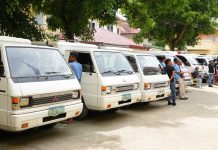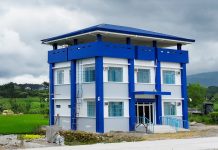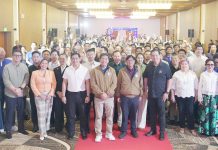TACLOBAN CITY—Bishops from the region issued an appeal to President Aquino to hasten the rehabilitation and recovery efforts in Yolanda-hit areas as they noticed that the effort was “a little bit slow,” close to seven months after Eastern Visayas was pummeled by supertyphoon Yolanda. The appeal was issued by Bishops Isabelo Abarquez of the diocese of Calbayog and Crispin Varquez of the diocese of Borongan during a media interview. The two bishops were in Tacloban to attend the “Livelihood Recovery Convergence in Samar Island” organized by the Asia Foundation and attended by different government agencies like Department of Agriculture, Bureau of Fisheries and Aquatic Resources (BFAR) and other non-governmental organizations like Tindog (Rise up) Samar held last May 26. “There seem to be lack of coordination, maybe there is lack of convergence. Those are important. Then when (BFAR national director Asis) Perez showed me a presentation this morning, it was found out that they have ‘convergence.’ So what is important is to integrate those suggestions made by the organizer,” Abarquez said. Abarquez, however, said that when he interviewed several mayors and even a governor, he was able to know on the issue of lack of funding. “I think the locals are just waiting,” he said. Abarquez’ area covers the entire province of Samar with the towns of Basey and Marabut the hardest areas. For his part, Bishop Varquez said that he is more concern of the housing needs in his areas. “On housing, still there is no concrete (solution). There is a plan, but still no concrete plan,” Varquez said. Varquez said that since they were able to get some funding from various private donors, they were doing their part for the construction of temporary shelters for the victims in Eastern Samar, particularly in the towns of Salcedo, Mercedes and Guiuan, considered to be the worst hit of Yolanda in the province. The bishop also voiced out on the problem of land acquisition for the permanent housing. Varquez maintained that there is still a chance for the region to recover quickly if everyone will work together. “The reason of our coming here is why we have this convergence. Practically, so that all sectors, whether from private, public, local, national and international, to help each other, to help survivors to rebuild their lives and become better persons. Eastern Visayas would not the same anymore, three years after Yolanda. I hope we can see that kind of goal, otherwise if nothing happens, we’ll go back to being poor, perhaps even more like before Yolanda,” he said. “That is our common vision. How we can make our place more productive three years from now. Otherwise we will miss the opportunity. We have to transcend ourselves. Yolanda must be transformative. Its destructive effect should transform us all,” Varquez added.
Meanwhile, BFAR national director Perez assured the public that they have doing their job, particularly in providing fishing boats for the fishermen in all affected areas.
He, however, admitted that with the extent of damage caused by Yolanda, the government was overwhelmed of its impact reason why the rehabilitation effort appears to be slower than expected.
Perez also said that their efforts are not being announced to the public as “this is part of our job.’
“It is part of our duty. It is our job,” he said.
Director Bernadette San Juan of the DA also maintained that rice farmers in the region continued to boost its productivity by giving the farmers certified seeds and fertilizers with the help of the Food and Agriculture Organization (FAO).(RONALD O.REYES)



